
Quake II is a 1997 first-person shooter video game developed by id Software and published by Activision. It is the second installment of the Quake series, following Quake. The game's storyline is continued in its expansions, including one tying in Quake II and the first game, and Quake 4.
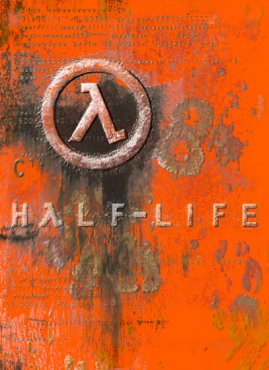
Half-Life is a 1998 first-person shooter (FPS) game developed by Valve Corporation and published by Sierra Studios for Windows. It was Valve's debut product and the first game in the Half-Life series. The player assumes the role of Gordon Freeman, a scientist who must escape from the Black Mesa Research Facility after it is invaded by aliens following a disastrous scientific experiment. The gameplay consists of combat, exploration and puzzles.
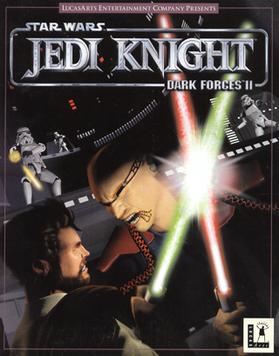
Star Wars Jedi Knight: Dark Forces II is a 1997 first-person shooter video game developed and published by LucasArts for Microsoft Windows. It is the sequel to 1995's Star Wars: Dark Forces, and the second installment in the Star Wars: Jedi Knight series. The story, set in the fictional Star Wars expanded universe one year after the film Return of the Jedi, follows returning protagonist Kyle Katarn, a mercenary working for the New Republic, who discovers his connection to the Force and "The Valley of the Jedi", an ancient source of power. With his father having been murdered years prior by the Dark Jedi Jerec and his followers over the Valley's location, Katarn embarks on a quest to confront his father's killers and find the Valley before they do.

Men in Black is a 1997 American science fiction action comedy film based on Lowell Cunningham's eponymous comic book series, which was itself based on the “Men in black” conspiracy theory. Produced by Columbia Pictures and Amblin Entertainment in association with MacDonald Parkes Productions, and distributed by Sony Pictures Releasing, it is the first installment in the Men in Black franchise. Directed by Barry Sonnenfeld from a screenplay and screen story written by Ed Solomon, it stars Tommy Lee Jones and Will Smith in the lead roles, with Linda Fiorentino, Vincent D'Onofrio, and Rip Torn in supporting roles. In the film, Kevin Brown / Agent K (Jones) and James Darrell Edwards III / Agent J (Smith) investigate a series of seemingly unrelated criminal incidents related to the extraterrestrial lifeforms which live in secret on Earth.

Half-Life: Opposing Force is an expansion pack for the first-person shooter game Half-Life. It was developed by Gearbox Software and published by Sierra On-Line for Windows on November 19, 1999. Opposing Force was the first expansion for Half-Life and was announced in April 1999. Lead designer Randy Pitchford noted that he believed Gearbox was selected to develop Opposing Force because Valve, the creators of Half-Life, wanted to concentrate on their future projects. Over the course of development, Gearbox brought in a variety of talent from other areas of the video games industry to help bolster various aspects of design.

X-COM: Apocalypse is a 1997 science fiction tactical strategy game. It is the third game in the X-COM video game series. It was developed by Mythos Games, and published by MicroProse in 1997 for DOS and Microsoft Windows.

Men in Black II is a 2002 American science fiction action comedy film based on the Marvel Comics series of a similar name based on the conspiracy theory. Produced by Columbia Pictures and Amblin Entertainment in association with MacDonald Parkes Productions, and distributed by Sony Pictures Releasing, it is the sequel to Men in Black (1997) and the second installment in the Men in Black franchise. The film was directed by Barry Sonnenfeld from a screenplay by Robert Gordon and Barry Fanaro, and it stars Tommy Lee Jones and Will Smith, with Lara Flynn Boyle, Johnny Knoxville, Rosario Dawson, Tony Shalhoub, and Rip Torn in supporting roles. It also featured Michael Jackson's last theatrical film appearance before his death in June 2009. In the film, the emergence of an assumed subdued alien threat reunites Kevin Brown / Agent K (Jones) and James Darrell Edwards III / Agent J (Smith).

Aliens Versus Predator is a 1999 science fiction first-person shooter video game developed by Rebellion Developments and published by Fox Interactive for Microsoft Windows, Mac OS, and Mac OS X. It is a part of the Alien and Predator crossover franchise, Alien vs. Predator. A sequel, Aliens Versus Predator 2, was developed by Monolith Productions and released by Sierra in 2001.

Redneck Rampage is a 1997 first-person shooter game developed by Xatrix Entertainment and published by Interplay. The game is a first-person shooter with a variety of weapons and levels, and has a hillbilly theme, primarily taking place in a fictional Arkansas town. Many of the weapons and power-ups border on the nonsensical, and in some ways the game is a parody of both first-person shooter games and rural American life.

The X-Files Game is an interactive movie point-and-click adventure video game developed by HyperBole Studios and published by Fox Interactive. The game was released for Microsoft Windows, Mac OS and PlayStation in 1998, and is based on the television series The X-Files.

Men in Black: Alien Attack is a shooting interactive dark ride located at Universal Studios Florida in Orlando, Florida, based on the film, Men in Black, itself based on the original comic book of the same name created by Lowell Cunningham. The ride opened in 2000 after a five-year development process. The ride has generally been well received, winning an Outstanding Achievement award from the Themed Entertainment Association.
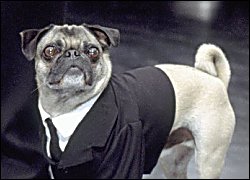
Frank the Pug is a fictional character from the Men in Black franchise, first seen in the 1997 film. He has also appeared in the 2002 sequel, 2019 spin-off, the animated series and the video game MIB: Alien Crisis. Within the films, Frank has the appearance of a normal pug dog, but he is actually an extraterrestrial in disguise. Frank is played in the first two films by a trained pug named Mushu, with Tim Blaney providing his voice in the films and the video game. In the animated series, the voice is provided by Eddie Barth. Mushu was raised by Ted Brac, who trained him for all his acting roles.

Army Men is a real-time tactics video game developed and published by The 3DO Company for Microsoft Windows and Game Boy Color.
H.E.D.Z. or Head Extreme Destruction Zone is a 1998 action game for Windows from VIS Interactive published by Hasbro Interactive. The player, whose character is an alien, selects heads and goes on a preset order of battlefields to fight other aliens for heads, as well as the right to be the MVP of the arenas.
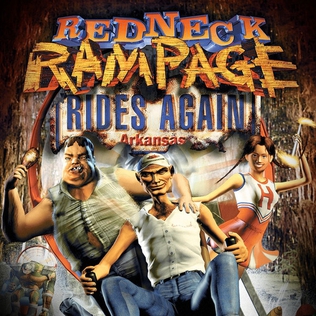
Redneck Rampage Rides Again is a video game developed by Xatrix Entertainment and published by Interplay Entertainment for MS-DOS in 1998. It was rereleased on Steam for Microsoft Windows on June 5, 2017, and for macOS on June 18. The game is supported by the BuildGDX, Rednukem and Raze source ports.

Men in Black is a semi-comic science fiction media franchise that originated with the Malibu/Marvel comic book of the same name created by American author Lowell Cunningham. The franchise focuses on the titular non-governmental organization which monitors and regulates paranormal and alien activity on Earth while preventing civilians from finding out about it. The most notable agents within the organization are Jay, Kay, and Zed. The franchise has been adapted into other media including a series of four films, an animated television series, video games, and a theme park attraction.
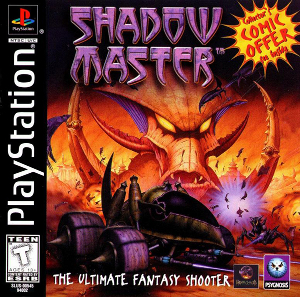
Shadow Master is a video game developed by HammerHead and published by Psygnosis for the PlayStation and Microsoft Windows. It is a first-person shooter in which the player character rides in an armed vehicle. It met with predominantly negative reviews which praised its visuals but criticized it for clunky controls and poorly designed, frustrating gameplay.

Killing Floor 2 is a first-person shooter video game developed and published by Tripwire Interactive, with later support from Saber Interactive. It is a sequel to 2009's Killing Floor. An early access version of the game was released for Microsoft Windows in April 2015, and the game was released in November 2016 for Windows and PlayStation 4 and August 2017 for Xbox One. The game utilizes Epic Games' Unreal Engine 3. A sequel, Killing Floor 3, is in development.
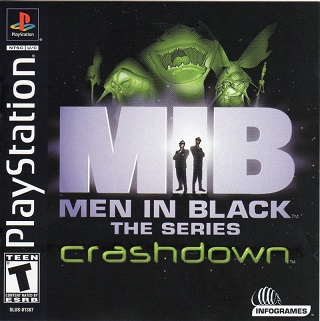
Men in Black: The Series – Crashdown is a first-person shooter video game based on the animated television series, Men in Black: The Series. The game was developed by Runecraft and published by Infogrames for the PlayStation. It was released in November 2001 to mixed reception.

Men in Black: The Series is an action platform video game developed by Tiertex Design Studios and published by Crave Entertainment for the Game Boy Color (GBC) on December 14, 1998. The game is based on the animated television series of the same name, and was followed by a sequel titled Men in Black 2: The Series, released for the Game Boy Color in 2000.



















